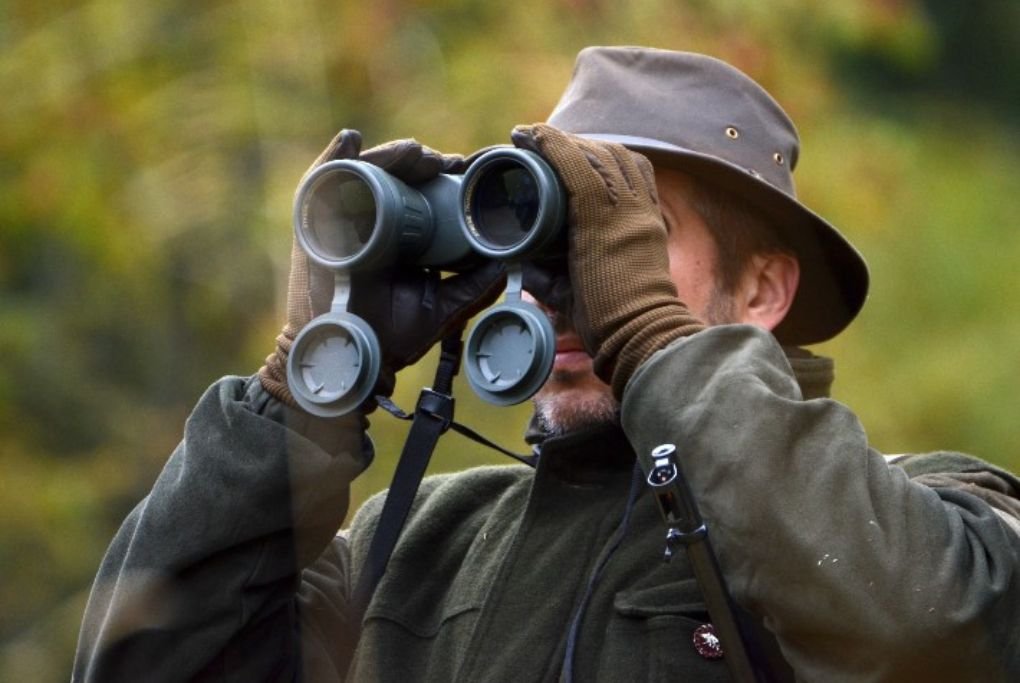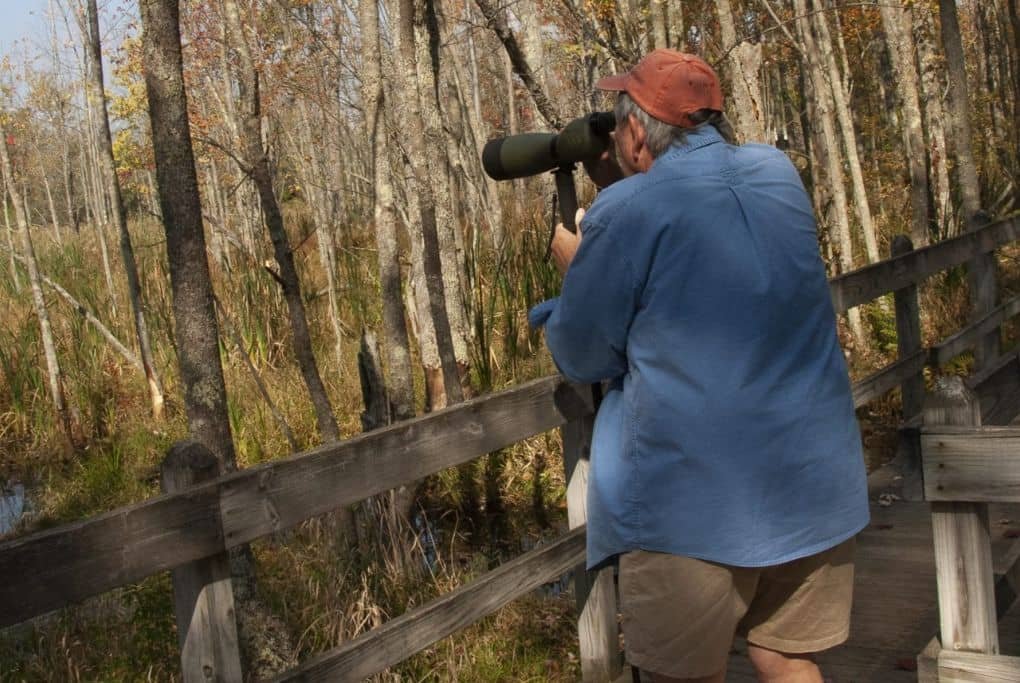Bird watching is a rewarding hobby that lets people enjoy nature and see amazing birds up close. Binoculars are key tools that make bird watching possible. They let viewers see far-off birds in detail. Good binoculars for bird watching have bright, clear optics and are easy to use.
Top models from brands like Nikon, Zeiss, and Swarovski offer sharp views even in low light. Features like waterproofing and fog-proofing help in outdoor settings. Picking the right binoculars depends on factors like budget, size, and magnification.
Beginners often do well with 8×42 models that balance power and field of view. More advanced birders may prefer higher magnifications. Testing binoculars in person is ideal to find a comfortable pair that meets your needs.
Table of Contents
ToggleThe Essentials of Bird-Watching Binoculars
Bird-watching binoculars have key features that affect image quality and usability in the field. These include magnification, lens size, prism type, field of view, and lens coatings.
Magnification and Objective Lens Diameter
Binoculars are labeled with two numbers, like 8×42. The first number is the magnification power. Most bird watchers use 7x to 10x magnification. Higher power can make it hard to keep the image steady.
The second number is the size of the front lenses in millimeters. Larger lenses let in more light but add weight. 42mm is a popular size for birding.
A wider lens helps in low light but makes the binoculars heavier. For example, 8×42 binoculars offer a good balance of magnification and light-gathering ability. Must Read: Birds With Crowns
Types of Prisms
Binoculars use prisms to flip the image right-side up. There are two main types:
- Roof prisms: Compact and lighter
- Porro prisms: Bulkier but often cheaper
Roof prism binoculars are more popular for bird watching. They’re easier to hold steady and pack for travel. Porro prisms can offer a wider field of view at a lower cost.
High-end binoculars use special glass in their prisms. This improves image quality and brightness.

Field of View
Field of view is how wide an area you can see through your binoculars. It’s usually given as feet at 1,000 yards. A wider field makes it easier to find and follow birds.
Lower magnification often means a wider field of view. This is why many birders prefer 7x or 8x binoculars. They’re good for scanning trees and following flying birds.
Some binoculars list their angular field of view in degrees. You can convert this to feet at 1,000 yards by multiplying by 52.5.
Lens Coatings
Lens coatings reduce glare and improve light transmission. This makes images brighter and clearer. There are different levels of coating:
- Coated: One layer on some lenses
- Fully coated: One layer on all lenses
- Multi-coated: Multiple layers on some lenses
- Fully multi-coated: Multiple layers on all lenses
Fully multi-coated lenses offer the best image quality. They reduce glare and improve contrast. This helps you see details in bird feathers and colors.
Some high-end binoculars have special coatings. These can repel water, resist scratches, or enhance specific colors.
Ergonomics and Comfort
Comfort and ease of use are key factors when choosing binoculars for bird watching. The right design can make a big difference in your viewing experience.
Weight and Size Considerations
Binoculars come in various sizes and weights. Compact models are lighter and easier to carry but may sacrifice image quality. Full-size binoculars offer better views but can be heavy for long use.
For all-day birding, look for binoculars under 30 ounces. Many quality options weigh 20-25 ounces. Neck straps and harnesses can help distribute weight.
Size affects portability. Compact 8×25 or 10×25 models fit in a pocket. Mid-size 8×32 or 10×32 binoculars balance portability and performance. Full-size 8×42 or 10×42 models are common for serious birders.
Eye Relief and Eyecups
Eye relief is the distance your eyes can be from the eyepieces while still seeing the full image. Longer eye relief (15-20mm) is better for eyeglass wearers.
Adjustable eyecups let you set the right eye relief. Twist-up eyecups are easy to use and stay in place. Fold-down rubber eyecups are simple but can wear out. Some binoculars have click-stop eyecups with set positions. This helps maintain your preferred setting. Also Read: Is Bird Watching a Popular Hobby?

Focus Mechanisms
A smooth, precise focus wheel is crucial for quick bird identification. Center focus wheels are the most common. They adjust both barrels at once.
Individual eyepiece focus is found on some models. It’s slower but holds focus well for distant viewing. Close focus distance matters for nearby subjects. Look for binoculars that can focus as close as 6-8 feet.
Some binoculars have a diopter adjustment. This fine-tunes one barrel to account for differences between your eyes.
Optical Performance and Quality
Optical performance and quality are crucial factors when choosing binoculars for bird watching. These aspects directly impact the user’s ability to see birds clearly and in detail.
Resolution and Clarity
High-quality binoculars offer sharp, clear images with excellent resolution. This lets bird watchers see fine details like feather patterns and eye colors. The best binoculars use premium glass and coatings to reduce distortion and improve image quality, making them an essential tool for enthusiasts looking to learn how to attract a woodpecker.
Some top models, like the Zeiss SFL 8×40 and Swarovski NL Pure 12×42, are known for their exceptional clarity. These binoculars let users spot subtle differences between similar bird species.
Lower-priced options like the Vortex Triumph HD 10×42 can also provide good clarity for their price range. They may not match premium models but still offer clear views for most bird watching needs.
Color Fidelity and Contrast
Accurate color reproduction is essential for identifying birds. Good binoculars show true-to-life colors without any tinting or distortion. This helps bird watchers see subtle shades and markings.
Contrast is equally important. It helps birds stand out from their backgrounds, making them easier to spot and identify. High-contrast optics show clear boundaries between light and dark areas.
Many modern binoculars use special lens coatings to boost color fidelity and contrast. These coatings can make a big difference in image quality, especially in challenging lighting conditions.
Low Light Performance
Bird watching often happens in dim light, like dawn or dusk. Binoculars that perform well in low light let users see birds clearly for longer periods each day.
Factors that affect low-light performance include:
- Lens diameter
- Lens coatings
- Glass quality
Larger lenses gather more light, improving visibility in dim conditions. Models like the Swarovski NL Pure 10×52 have big lenses that excel in low light.
Special coatings can also boost light transmission. This means more of the available light reaches the user’s eyes, resulting in brighter, clearer images.

Durability for Outdoor Use
Binoculars for bird watching need to withstand various outdoor conditions. Key features like waterproofing and rugged construction protect the optics and ensure they function reliably in nature.
Waterproofing and Fog Proofing
Quality binoculars use O-ring seals to keep water out. This protects the internal parts from moisture damage. Many models can handle brief submersion in shallow water.
Fog proofing prevents internal lens fogging in humid or rainy conditions. Manufacturers purge the air inside and replace it with nitrogen or argon gas. This stops condensation from forming inside the binoculars.
Some binoculars have hydrophobic coatings on the outer lenses. These coatings repel water, making it easier to see in wet weather. They also help keep the lenses clean.
Rugged Construction and Materials
Durable binoculars use strong materials like magnesium alloy or polycarbonate for the body. These materials resist impacts and scratches while staying lightweight. Rubber armor on the exterior adds grip and shock absorption. It protects the binoculars if dropped and makes them more comfortable to hold.
High-end models often have reinforced hinges and focus knobs. These parts get a lot of use and need to be sturdy. Some binoculars have locking diopter adjustments to prevent accidental changes. Scratch-resistant coatings on the lenses help them stay clear. Many binoculars come with lens caps and carry cases for extra protection when not in use.
Selecting the Right Model for You
Choosing binoculars for birdwatching involves balancing several key factors. The right model depends on your budget, birding environment, and personal preferences.
Price Versus Performance Trade-offs
Entry-level binoculars can be found for under $100 but may lack durability and optical quality. Mid-range options ($200-$500) offer good value for most birders.
High-end models ($1000+) provide superior image clarity and low-light performance. These are ideal for serious birders or those in challenging environments.
Consider how often you’ll use the binoculars. Casual birders may be satisfied with less expensive models, while frequent users benefit from higher-quality optics.
Specialized Binoculars for Specific Birding Environments
Waterproof binoculars are essential for wet climates or coastal birding. Look for models with fog-proof lenses to prevent internal condensation. For forest birding, wider field of view is helpful. 8×42 magnification is popular for balancing detail and light gathering ability. Open terrain birding may benefit from higher magnification like 10×42. This allows distant bird identification but can make image stabilization harder. Compact models (8×25 or 10×25) are good for travel but sacrifice some light-gathering ability.

Brand Comparisons and Reviews
Popular brands include Nikon, Zeiss, Swarovski, and Vortex. Each offers models across price ranges. Nikon’s Monarch line provides good value in the mid-range category. Zeiss and Swarovski lead in premium optics but at higher prices. Vortex offers lifetime warranties on many models, appealing to birders concerned about durability.
Read expert reviews and user feedback to compare models within your budget. Try before buying if possible, as comfort and ease of use vary between individuals.
Accessories and Enhancements
Bird watchers can improve their experience with some key add-ons. These tools help protect binoculars, keep them clean, and expand their uses.
Harnesses and Straps
Good straps keep binoculars safe and easy to use. Basic neck straps work, but harnesses spread the weight across both shoulders. This helps on long bird watching trips. Harnesses also stop binoculars from swinging when you walk or bend down.
Some harnesses have quick-release clips. These let you take off your binoculars fast when needed. Look for padded straps for extra comfort. Waterproof materials are great for rainy days.
Cleaning Kits and Lens Protection
Clean lenses are key for clear views. A basic cleaning kit should have:
- Microfiber cloth
- Lens cleaning solution
- Soft brush
- Air blower
Use the air blower first to remove loose dirt. Then use the brush for stubborn bits. Finally, clean with the solution and cloth.
Lens caps protect glass when not in use. Some attach to straps so you don’t lose them. Soft cases add more protection during transport.
Adapters and Digiscoping
Adapters let you connect cameras to binoculars. This is called digiscoping. It’s great for taking photos of far-away birds.
There are two main types:
- Universal adapters that fit many phones
- Custom adapters made for specific phone models
Digiscoping adapters need to line up the phone camera with the binocular eyepiece. Good ones have adjustable mounts for perfect alignment. Some high-end binoculars have built-in camera adapters. These often give the best results but cost more.
Environmental Considerations and Ethics
Bird watching can impact wildlife and habitats. Practicing ethical behavior and supporting conservation efforts helps protect birds and their ecosystems.
Impact of Bird Watching on Wildlife
Bird watchers should keep a safe distance from birds. Getting too close can stress birds, disrupt nesting, or cause harm. Use binoculars or spotting scopes to view birds from afar. Avoid loud noises and sudden movements that may startle birds. Never touch or handle wild birds.
During nesting season, be extra careful not to disturb nesting sites. Even if birds don’t flee, approaching too closely can cause stress. Watch for signs that birds are uncomfortable with your presence.
When birding in groups, leaders should ensure all members follow ethical practices. More people means a higher chance of disturbing wildlife and habitats if not done responsibly.
Conservation and Sustainable Practices
Ethical bird watching supports conservation. Follow local guidelines and obey all wildlife protection laws. Stay on marked trails to avoid damaging habitats. Don’t remove plants or disturb the environment.
Join bird conservation groups to help protect species and habitats. Many birding organizations fund research and habitat preservation. Volunteer for bird counts and surveys to aid scientific efforts.
Choose eco-friendly gear and products. Opt for rechargeable batteries in your equipment. Reduce waste by bringing reusable water bottles and snacks in reusable containers.
Report rare bird sightings responsibly. Don’t share the exact locations of sensitive species that could be disturbed by crowds. Support protected areas and nature reserves through visits and donations.
Frequently Asked Questions About Binoculars for Bird Watching
What features should I look for in binoculars specifically designed for bird watching?
Bird watching binoculars often have wide field of view. This helps spot birds quickly. They also have good close focus for viewing nearby birds. Waterproof and fogproof features protect against weather. Durable rubber armor shields from bumps and drops.
How do magnification and objective lens size affect bird-watching experiences?
Higher magnification brings birds closer but narrows field of view. Most birders prefer 8x or 10x magnification. Larger objective lenses let in more light. This improves image brightness. Common sizes are 32mm, 42mm, or 50mm.
What are the pros and cons of compact vs. full-sized binoculars for birding?
Compact binoculars are lightweight and easy to carry. They fit in pockets or small bags. However, they may have less light-gathering ability. Full-sized models offer brighter images and wider views. They work better in low light. But they’re heavier to carry all day.
Are there affordable binoculars suitable for bird watching without compromising on quality?
Many brands offer good quality binoculars at mid-range prices. These balance performance and cost. Features like multi-coated lenses improve image quality. Meanwhile, roof prism designs can be more affordable than porro prisms.
Which binocular specifications are recommended for beginners interested in bird watching?
Beginners often do well with 8×42 binoculars. This magnification and lens size work for most situations. Look for models with a wide field of view. This makes finding and following birds easier for new birders.
How do I choose between different binocular brands when it comes to bird watching?
Compare warranties and customer service. Some brands offer lifetime guarantees. Read reviews from other birders. Look for brands known for optical quality and durability. Try different models if possible. Comfort and ease of use vary between brands and models.


